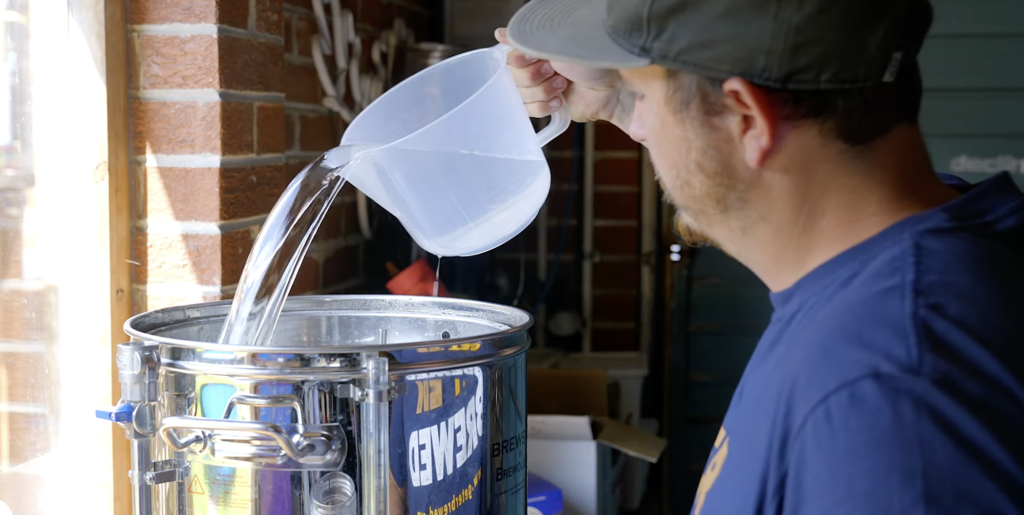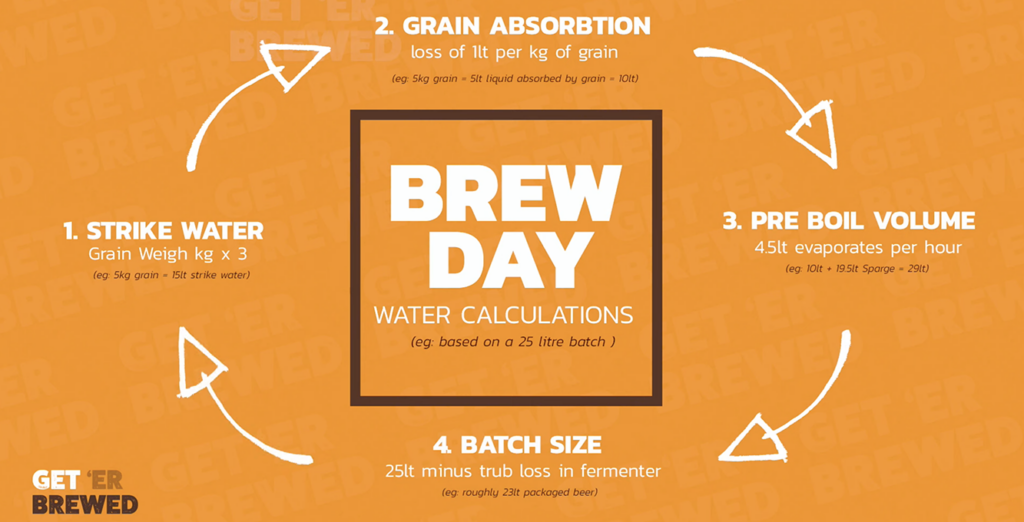Comparing fly sparging and batch sparging methods for your home-brew system. What is the best method to use as a homebrewer?
First, let’s look at what is sparging?
Sparging is the rinsing of the residual sugars off the grain in the mash tun and into the kettle for boiling the wort. Sparring allows you to achieve high efficiency at ensures you hit your target gravity in your brew days.
What is Fly Sparging?
The process of using a sparge arm to evenly distribute the sparge water across the top of the grain bed. The challenge is to try and match the flow of the water going into the top of the grain bed as the flow coming off the bottom into the kettle. Fly sparging doesn’t necessarily need a sparge arm, but you will benefit from a pump and some way of spreading the water. The aim is to have an even flow of the sparge water through the grain bed to achieve the best extract, regardless of what way the water is distributed. This method is normally used by commercial breweries as it is a more efficient way to extract sugars out of the grain. However, it is a much longer process and can take a few hours.

What is Batch Sparging?
It’s the same idea as fly sparging but you don’t need a sparge arm and you don’t need to monitor the flow rate. You simply add all the sparge water in one batch. Some brewers allow the initial mash to run off completely before adding the batch of sparge water. When added in one batch it is best practice to allow some time for enzymatic activity before starting the run off again. We would recommend up to 30 minutes. Batch sparging is a faster process than fly sparging and with modern-day highly modified grain, it’s possible to batch sparge for good extract. If you want to use the speed of batch sparging to achieve the same extract as fly sparging you can simply add some extra malt, say 10-15% more base malt to achieve a higher gravity and as malt is inexpensive it’s a quick fix to a faster brew day.

How to calculate Sparge Water Volumes?
Everyone’s system will be slightly different depending on the setup but as a general rule of thumb, you should mash in with 3 times the volumes of water as to the total grain bill weight. The absorption rate will be roughly 1 litre per kilo so you need to allow for this. You will also need to allow for the boil-off rate, so sparge water volume will be:
Mash In volume (minus) absorption rate = total, then take target preboil volume (minus)boil off rate = sparge volume
Eg. 7kg grain bill for 25 litres into fermenter = (3×7 = 21 – 7 = 14 . Boil off rate at 3.5 litres , so 28.5 – 14 = 14.5 litres sparge volume
In Conclusion
Choose the best method that best suits your setup. Also, consider how much time you have on your brew day. Both methods will work, just choose which one will work for you.
Check out our latest video on sparring here:
Also ,
Checkout the sparge water heating options here:
UK – https://www.geterbrewed.com/heating-equipment/
EU – https://www.geterbrewed.ie/heating-equipment/